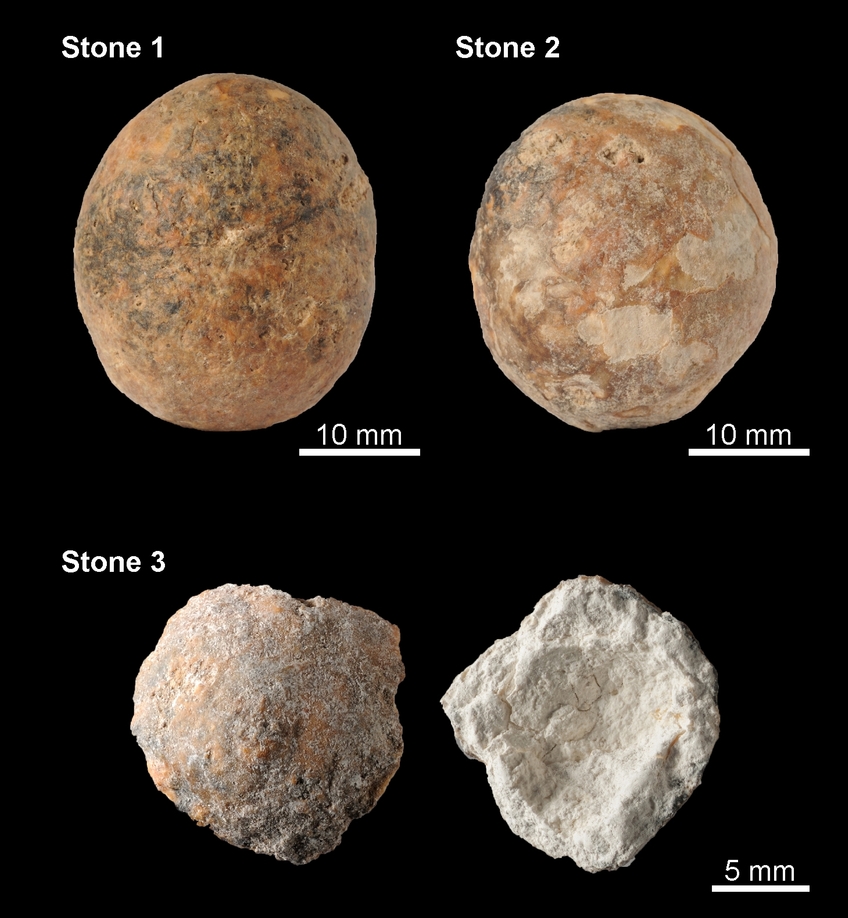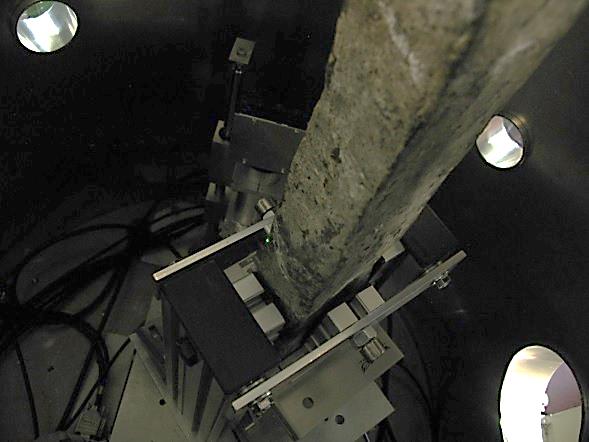However both neutrons and muons are now being used as powerful tools to probe the past, due to their non-destructive and penetrating nature, allowing researchers to look deep inside historical artefacts to uncover the mysteries that lie within - without causing damage to the object.
Instruments have been used, each with unique capabilities. ENGIN-X measures the stresses and strains within samples at the atomic level, IMAT utilises neutron imaging, INES and GEM use neutron diffraction techniques, and CHRONUS uses negative muons to investigate elemental composition. Over the years these instruments have produced more than 750 papers between them spanning a variety of scientific disciplines, including heritage science. In this feature article we take a closer look at how these powerful instruments have shed light on the past.
Neutrons and the 12,000-year-old medical mystery
Our journey with neutrons and the past goes back to 10,000 BCE. In 2013, a team of archaeologists uncovered a pre-Mesolithic burial site in Sudan, with one of the bodies containing an unusual feature. Three stone-like objects were found within the human skeleton. Initially they were thought to be kidney, bladder or gall stones, however after neutron diffraction studies on INES, the team arrived at a startling conclusion. They were prostate stones, ranging in diameter between 26 and 30mm and weighing between 12 and 15g. It was possible to come to this conclusion by analysing the phase composition of the objects. The result is curious because, prior to this discovery, prostate stones were thought to be an exclusively modern condition, but here was an unfortunate individual seeming to prove otherwise. The archaeologists weren't able to say whether the stones resulted in his death, but were able to comment that due to the large size of the stones, they would have caused intense pain and affected quality of life.
|  Figure 1: Photographs of the three prostate stones. D Usai, ed. et al. Late Pleistocene/Early Holocene Evidence of Prostatic Stones at Al Khiday Cemetery, Central Sudan. PLoS ONE 12, no. 1 (2017): e0169524. doi:10.1371/journal.pone.0169524. |
Neutrons and the Egyptian married couple from 1400 BCE
Leaping forward in time several thousands of years but moving to the bordering country, neutrons take us to look at artefacts found in the tomb of 18th Dynasty royal architect Kha and his wife Merit found in Egypt. The tomb was discovered in 1906 containing a wealth of history, but it was two specific artefacts that were studied at ISIS – a sealed alabaster vase and a metallic situla (a type of elaborate bucket-shaped vessel). The sealed alabaster vase was perfect for neutron study as rather than opening the vase, neutron imaging could see through the exterior and find out what was inside without putting the object at risk. The IMAT beamline at ISIS employs a variety of techniques to study materials. ENGIN-X enabled the use of Neutron Diffraction (ND) which produced diffraction patterns. Neutron Radiography (NR) and Prompt Gamma Activation Analysis (PGAA) were used for both artefacts, Neutron Tomography (NT) for the vase and ND for the situla. Through NT measurements, the research team found that the sealed vase contained organic material and an alabaster cone-shape plug covered with linen stripes. The organic material inside was visible due to it being an almost homogenous substance, which strongly attenuates the neutron beam. As the situla was open, it wasn't a case of what it contained, but rather how it was made. NR showed that it was the product of two different alloys with two halves joined together by rivets. The upper section of the situla was opaque to neutrons which could be attributed to thicker vase walls or elements with higher neutron attenuation.
| 
Figure 2: NT slices and 3D volume rendering of the alabaster vase. G Festa et al. Egyptian grave goods of Kha and Merit studied by neutron and gamma techniques. Angew Chem 57, no. 25 (2018): 7375-7379. doi:10.1002/ange.201713043.
PGAA was used for isotopic and elemental analysis on the two objects. In the case of the vase, carbon and oxygen were detected and could be attributed to the presence of organic oils and resins and for the situla elements associated with a bitumen component were detected. The synergic combination of neutron techniques available at ISIS uncovered unprecedented data about the inner morphology, structure and elemental compositions of the two artefacts.
|
Neutrons and the Bronze Age SwordsLeaving Kha and Merit, we travel to Europe where a selection of Bronze Age swords were used in 1400 BCE. A research team from Université Bordeaux Montaigne and Uffington Heritage Watch, used neutrons to find out whether the swords discovered across Europe (countries including Austria, Italy and Slovenia) were used as stabbing or slashing weapons. Two swords were selected for study on the GEM beamline, one discovered in the river Danube before 1933, dating back to c. 1400 BCE and the second found in Lorch, Upper Austria made in c. 1325-1225 BCE. It seems bizarre that the answer to such a question should come from neutrons; however the researchers were able to determine their intended purpose. By looking at diffraction patterns obtained from GEM, it was possible for the team to determine structure variations, phase compositions and crystallographic textures of the weapons, and reveal how the swords were used. Data points were collected from up to 20 points on the swords after it had been safely secured in an aluminium frame and lowered into the GEM target chamber. The analysis varied from 20 minutes to an hour, where longer exposures were chosen for points on the edges as there was less material interfacing with the neutron beam. The researchers found that the edges of the swords had been worked more than the tips, therefore the final conclusion being, they were both slashing weapons! This result was consistent with records from the digs and aligned with documented sword-caused injuries on Middle- and Late Bronze Age skeletons.
|

|
Muons and the Roman coins
| Switching gears from neutrons to muons, negative muons are a useful tool for probing the past as evidenced by elemental analysis of Roman coins dated 14 AD to 420 AD. Muon scientists at ISIS, working together with the Universities of Oxford and Warwick have developed a technique on CHRONUS which enabled the team to view clear differences in the elemental compositions of Roman coins. Muons are charged particles some 200 times heavier than electrons so a muon incident on an atom in the sample will undergo higher energy transitions than electrons. With these energy transitions, comes the production of characteristic muonic X-rays which can be easily detected after passing through the sample by a semiconductor detector. The intense pulsed muon source at ISIS has the capacity to generate a suitable negative muon beam with a momentum range of 20-90 MeV/c, meaning such analyses are now possible at the facility. By controlling the muon momentum, it was possible to successfully demonstrate a depth profile analysis of elements including iron, zinc, copper and silver from a layered sample several millimetres thick.
In terms of the history surrounding these coins, elemental analysis allows for a greater understanding of the economic climate of the Roman Empire when the coins were made.
| Figure 4: Gold Roman coin dated AD 74-75, analysed on CHRONUS
Additionally, it provides information regarding the exploitation of different mining territories as time progressed due to the varying ages of the coins.
|
Neutrons and the cathedral that took over 5 centuries to build
Skipping forward nearly 1,400 years, neutrons now take us to the Milan Cathedral – a cathedral whose construction started in 1386 and is regarded to have finished in 1965. A rare opportunity arose in 2012 when a broken tie rod – a long metallic rod that reinforces buildings – had to be replaced. It opened the door for the use of neutrons to study a sample of medieval technology and develop on site monitoring techniques. Both INES and ENGIN-X were used to study the tie rod, INES is often used for this type of study, as it features a specially developed frame designed for handling big delicate samples, able to hold up to 30kg. ENGIN-X on the other hand, is often considered an engineering tool, although has demonstrated its use for cultural heritage studies as well. INES enabled simultaneous ND and Neutron Resonant Capture Analysis (NRCA) to check for cracks and heterogeneities in the depth of the sample. A large amount of information about the sample was determined, from its composition (iron with zinc impurities), to crystalline phases and a map of strains.
| 
The work also saw benefit to the future maintenance of aging structures such as the cathedral as neutrons could be used to independently validate new on site monitoring techniques.
|
Neutrons and the Napoleonic War
400 years after construction began on the Milan Cathedral, in 1786 HMS Impregnable was launched at Deptford Dockyard. It is one of three ships which had copper bolts taken from them, to be analysed on ENGIN-X. The other two ships being HMS Amethyst (1799) and HMS Pomone (1805). The Napoleonic war era copper bolts underwent new texture analysis, NyRTex, which involved regrouping the individual detectors composing the diffraction banks into smaller groups of higher angular resolution. NyRTex accompanied by ND, found that all copper bolts used by the Royal Navy, from that time, were made of the same impure copper containing arsenic, bismuth, lead and silver traces. The texture analysis allowed for manufacturing qualities of the bolts to be found without having to undergo intrusive sampling. Crucially, this work is an import step in increasing understanding of the changes that took place in Royal Navy warships over that period.
|
Our neutron and muon guided, whistle-stop tour through time comes to an end, but with a diverse array of cultural heritage research already taking place at the ISIS Neutron and Muon Source, we look forward to welcoming even more unusual and unique samples in years to come.
Further information
